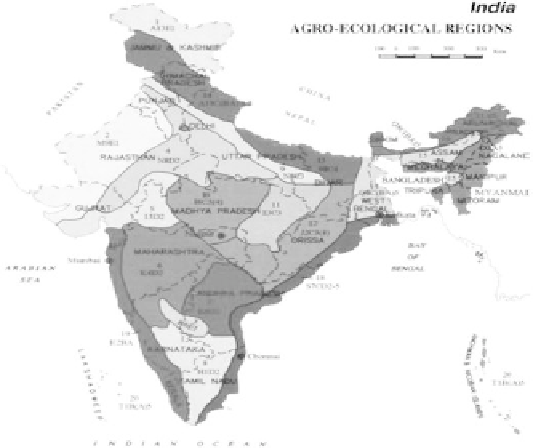Geoscience Reference
In-Depth Information
FIGURe 11.2
(
See colour insert
.) Map of India showing three
ecological zones (Mountains, Hills and Terai) in the region.
The most outstanding feature of India's climate is the
monsoon precipitation, which is characterised by two distinct
phases: the 'wet' and the 'dry'. The wet phase (June-September)
occurs in the summer season when the country receives over 75%
of the annual precipitation (Shrestha et al., 2000). The monsoon,
which is highly variable across space and time, is first experi-
enced in the eastern part of the country. The monsoon gradu-
ally moves westward with diminishing intensity. The amount of
summer monsoon and the number of days with rainfall decrease
substantially as it moves to the west and northwestern part of the
country (Chalise and Khanal, 1996) and the precipitation pat-
tern becomes more varied with the diverse terrain within each
physiographic belt (Chalise, 1994). While the temporal and spa-
tial variability of monsoon rainfall and its social relation of rice
production are well recognised, the specific role it plays in the
innovation of technology remains understudied. The risks and
impacts arising from monsoon variability are site specific and
require technological innovations that reflect local conditions.
Although no discernible long-term change in climate has
been observed, a study by the Department of Hydrology and
Meteorology (DOHM) reveals that the average temperature
in India is increasing at a rate of approximately 0.06°C per
year. The temperature differences are most pronounced during

